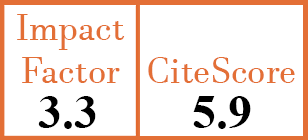Measurement
Magnetic resonance imaging assessment of knee osteoarthritis: current and developing new concepts and techniques
D. Hayashi1, F.W. Roemer2, A. Guermazi3
- Department of Radiology, Stony Brook Medicine, Stony Brook, NY, and Quantitative Imaging Center (QIC), Department of Radiology, Boston University School of Medicine, Boston, MA, USA. daichi.hayashi@stonybrookmedicine.edu, dhayashi@bu.edu
- Quantitative Imaging Center (QIC), Department of Radiology, Boston University School of Medicine, Boston, MA, USA, and Department of Radiology, University of Erlangen-Nuremberg, Erlangen, Germany.
- Quantitative Imaging Center (QIC), Department of Radiology, Boston University School of Medicine, Boston, MA, and Department of Radiology, VA Boston Healthcare System, West Roxbury, MA USA.
CER12778
2019 Vol.37, N°5 ,Suppl.120
PI 0088, PF 0095
Measurement
Free to view
(click on article PDF icon to read the article)
PMID: 31621571 [PubMed]
Received: 16/09/2019
Accepted : 17/09/2019
In Press: 15/10/2019
Published: 15/10/2019
Abstract
Magnetic resonance imaging (MRI) is a well-established imaging technique for structural assessment of knee osteoarthritis (OA) particularly in a research context. Conventional MRI allows evaluation of morphological changes in osteoarthritis, and advanced compositional MRI techniques enable assessment of ‘premorphologic’ biochemical compositional changes of articular and periarticular tissues. Limitations of conventional radiography are well known, although radiography remains the primary imaging modality applied in osteoarthritis clinical trials to date. Hybrid techniques such as PET/MRI have been introduced, which may potentially supplement conventional imaging techniques. Artificial Intelligence (AI) such as deep learning with convolutional neural networks is becoming increasingly recognised as a supportive instrument to deepen our understanding of morphologic OA development and progression. In this narrative review article, we will first give summary of current concepts and widely used MRI assessment techniques of knee osteoarthritis. We will then describe more recent and novel MRI techniques focusing primarily on publications from the last 4 years (2016-2019).


